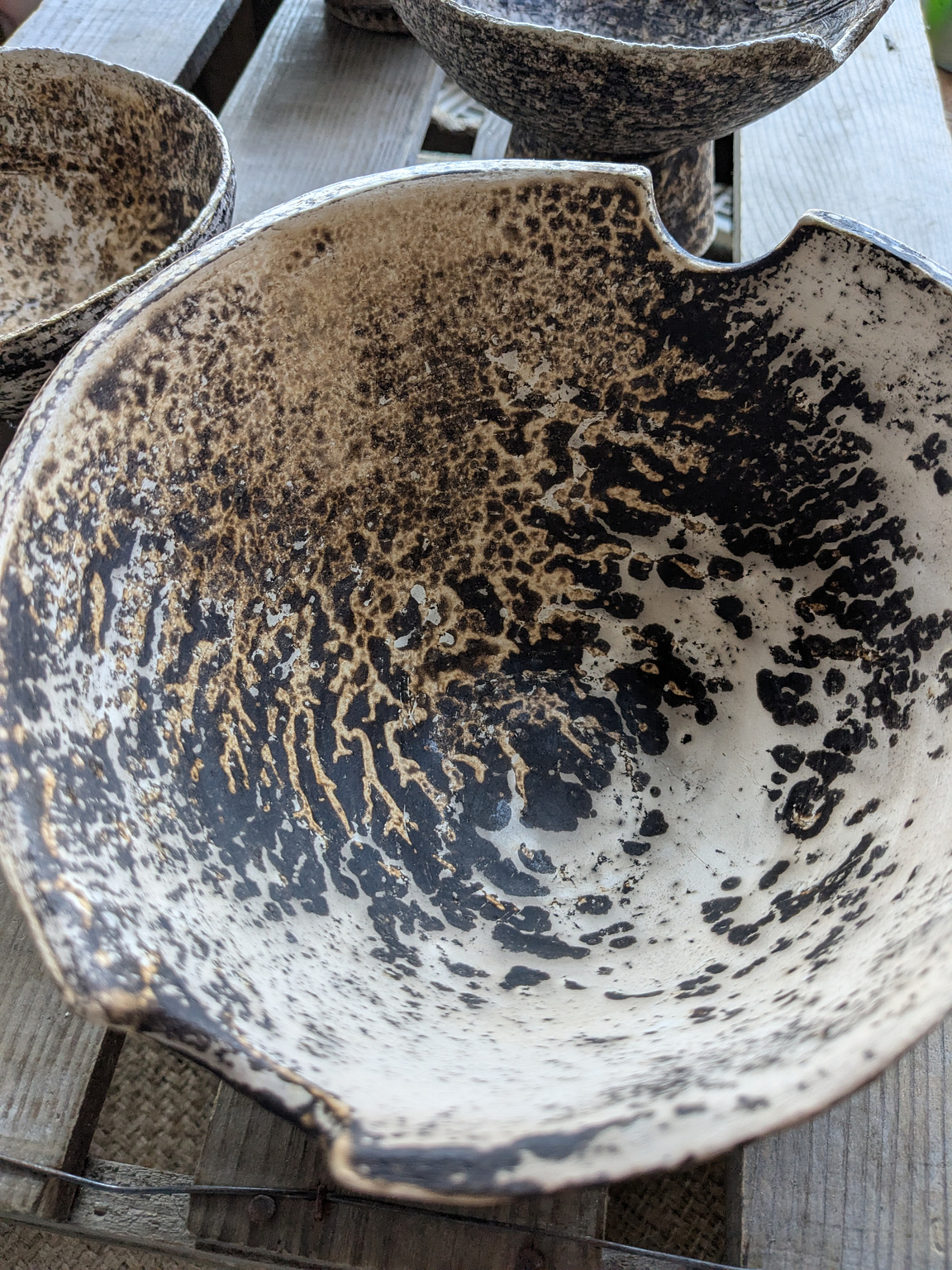Obvara firing fun
method and materialsA warm, no wind day was required for our social and experimental obvara firing recently at the house. Two of my pottery friends, Chris and Stuart, duly arrived ready for an afternoon of fun, armed with hot mulled apple juice and farmhouse scotch eggs. What a combo!
The weather behaved itself and came up trumps. 'No wind' is a good start for any raku-type firing as you are using an open flame—air turbulence can make it awkward to get the temperature up because of the fluctuations. And up it must go, to around 800° to 900° for an obvara firing.

The whole process starts weeks before the actual firing day though. Pots need to be made out of a clay with ‘grog’ in it (a mixture of crushed and ground potsherds, reintroduced into crude clay to temper it before making ceramic ware). This makes the clay able to withstand the violent temperature changes it will go through.
Once the pots are made, they need to be dried—and depending on the weather, where they are drying, and the thickness of the walls, this can take between 3 days and a week!
Once completely dry, the pots are bisque fired to 999° C. This turns the clay into ceramic, and then it is ready for the next stage.
Now, having never done an obvara firing before, the three of us had attempted in our own separate homes to make the concoction you dip the pots into, straight from the kiln. The first attempts were atrocious! Just a gooey, yeasty mess. We persevered, and I finally tried using my sourdough mother (I know, don't judge me!) as a starter for the mixture and it worked a treat. We were now in possession of 8 litres of pure, live, yeasty goodness.
The date was confirmed two days ahead and all I had to do was to keep the mixture alive and fermenting for that time. No pressure! I was like a beer parent, stirring, feeding, keeping it warm!
All was good in the obvara mix bucket and the day was set.
We all had a good selection of pots, bottles and bowls to test this out on.
The kit was unloaded from cars and out houses and away we went. Next came the dressing up! Boots, arm coverings, heavy duty pinny... sorry, apron. No masks were worn, purely because nothing in the obvara firing is toxic, but goggles and hats were worn when actually placing the pots in the yeast mixture, because it spits furiously!
The lads were in charge of flames, while I kept an eye on the mulled apple juice.
The homemade dustbin raku kiln was loaded with the first batch of pots, naked. Just pure clay and fire!
The temperature was taken up steadily. On previous raku-firing adventures we had lost all the kiln shelves we used by raising the temperature too fast and they had all cracked, badly—-they are not cheap!
A bottle of beer—of local Cornish origin of course—was poured into the mixture for a more hoppy note, and we were ready.
Gradually the temperature crept up to 850°. Time to remove the first pot.
On went the heat proof gloves and armed with the extra long tongs, the kiln is opened. Everything in there is glowing, so carefully the pot is removed using tongs and the lid replaced on the kiln to keep the heat in.
From there the pot is held into the obvara mixture, dunking it in for only mere seconds. The air was thick with steam and a kind of burnt marshmallow covered in Marmite smell! Glorious to me as I'm a lover of the yeasty treat!
From there, we move quickly to a bucket of cold clean water. Fizzing and popping the pot is cooled to stop the yeasty mix from burning. Leave it in the mixture too long and you'll get a black pot!
The patterns you get from the yeast reacting on the hot pot are amazing. We are all looking see if we get some characteristic, but elusive 'eyes', and there they are. Just beautiful.

I will have some of the results from this firing available to see and purchase at the Exeter Craft Fair. For details of that event, please follow this link.
